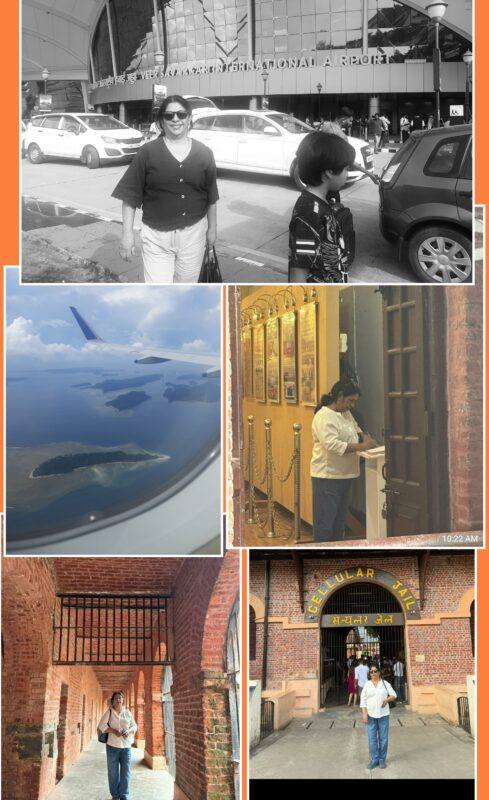Kalapani Now: The Cellular Jail Of Andaman And Nicobar Islands
The name ‘Cellular Jail of Andaman and Nicobar Islands‘ kickstarts a series of painful memories of the Indian Independence struggle. When I landed at the Veer Savarkar International Airport, it was the fulfilment of a journey to the yesteryears of freedom struggle, which is chained in the corridors of Kalapani.
Cellular jail is situated in Atlanta point almost 4 kilometres from the Veer Savarkar International Airport. Port Blair Air Port has been changed to Veer Savarkar International Air Port.
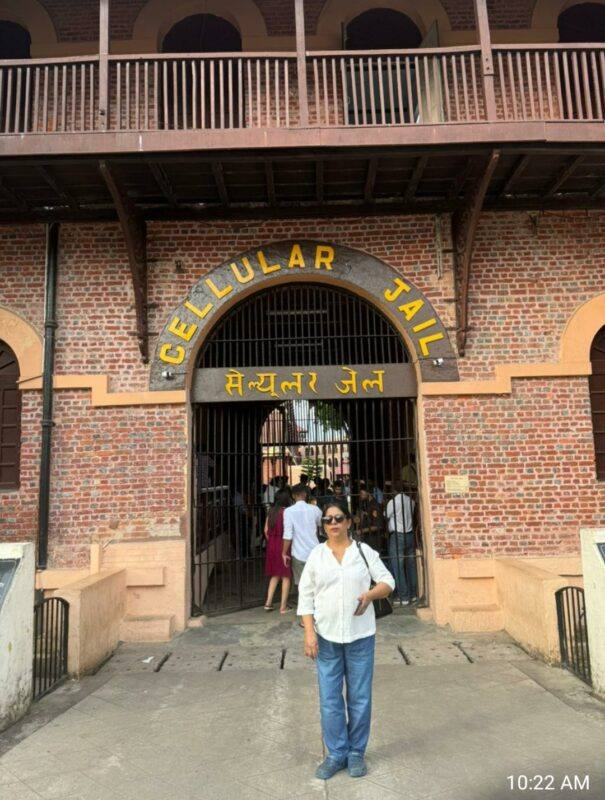
Same way, Havelock Island is changed to ‘Swaraj Island ‘and Neil Island is changed to ‘Shaheed Island’. Major General Havelock was the one who was particularly associated with India in suppressing the Lucknow siege in 1857. James Neil was the Brigadier General who fought on the side of the East India Company against the Sepoy Mutiny of 1857. [It was renamed Shaheed Deep as a tribute to Netaji Subhas Chandra Bose.]
As we enter the premises of the cellular jail, we feel some kind of different atmosphere altogether. I wandered, searching for the footsteps of the daredevils who sacrificed their lives for the dust in the corridors. I pressed my ears on the brick wall of the cell in an attempt to listen to the slogan” Vande Matharam.” The feeble murmur of the warm breeze was like the sighs of the inmates.
‘ Sarfroshi ki Tamanna ab hamare dil me hai.
Dekhna ki zor kitna baazu e qatil mein hai!
I picked up these words from the silence of the gallows. Bismi Azimabadi wrote this Urdu poem as a tribute to young freedom fighters like Bhagat Singh. When young Ram Prasad Bismil was put on the gallows, these opening lines of the poem were on his lips!
The British ruled India from 1858 to 1947 for a long period of 89 years. When the British occupied the Andaman and Nicobar Islands in 1869, they used it as a prison. Political prisoners and hardened criminals from all over the British Raj were sent to the remote Andaman Islands as punishments.
The British used Viper Island in Andaman to deport prisoners, but they abandoned Viper Island jail once the Cellular jail was complete. The ruins of the gallows are there on a hilltop. Viper Island derives its name from the vessel HMS Viper, in which Lt. Blair came to Andaman in 1789.
In 1893, the British started the construction of the cellular jail, which was completed in 1906 under different chief commissioners from time to time. They used prisoners as labourers. built in the shape of cycle spokes of seven wings fanning out from a central watch tower. The seven three-storied wings were not of equal length. The panopticon idea was carefully adapted for effective surveillance and to manage the inmates with a smaller number of guards.
The cellular jail has uniformly isolated cells. The face of a cell will open to the back of the other cell, so communication between inmates is impossible. [The inmates were from several parts of the country and spoke different languages.] The so-called hell on earth has an independent thirteen-by-seven-foot cell that is secured with a sturdy iron bolt and lock on a rectangular grove on the outside of the cell. There is water around the jail, and it is highly unlikely to escape. It was referred to as Kalapani jail among freedom fighters during the independence movement. Kala is a reference to death, which was the inevitable end for those doomed to serve the punishment. Pani is the water around you. The inmates—I don’t choose to call them prisoners or criminals because they are jailed for their demands for the civil rights of liberty and to live in their own land!
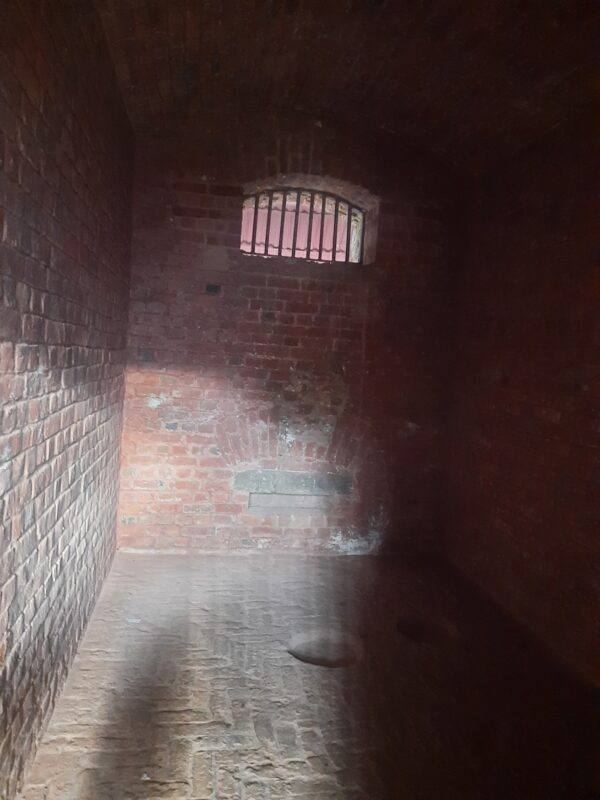
There was no toilet facility in the cell. Two adjacent shallow dips are seen on the floor, one to serve food and the other to be used as toilets!
The gallows are in full view of all cells, so they are forced to witness the dreaded executions. It is capable of hanging three prisoners at a time, with a door in the outer compound to carry the corpses out. The adjacent room is the kitchen for Hindus and Muslims.
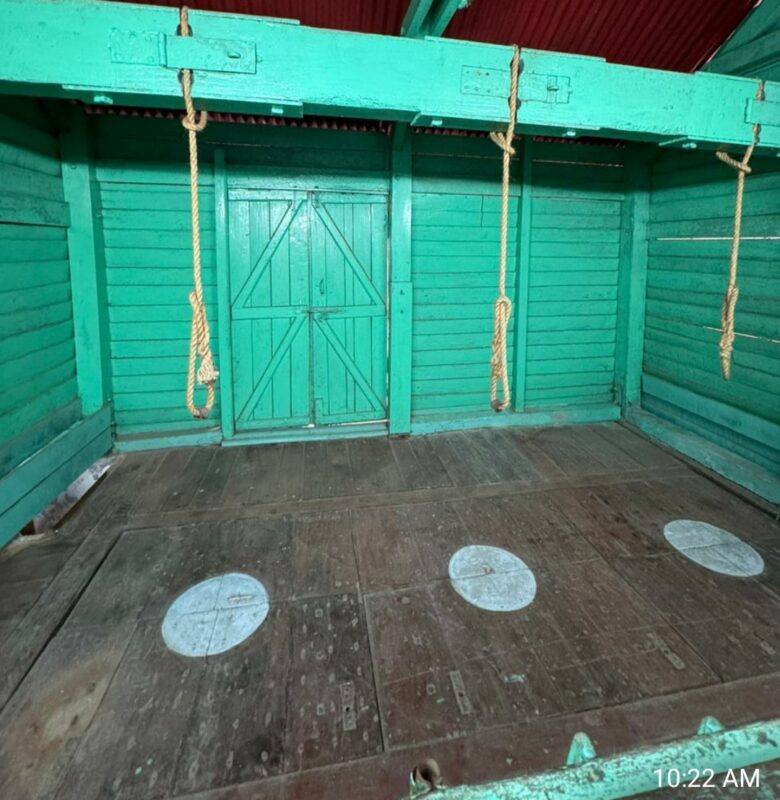
Captain PF Brown, superintendent of the central jail in Jubbulpore, was appointed chief superintendent of the cellular jail.
In the beginning of the twentieth century, the Swadeshi movement, the partition of Bengal, and the emergence of extremist groups adopted violent methods. Revolutionary activists grew up in Maharashtra, Bengal, Punjab, and other provinces. Anushilan Samiti was the most active organisation that played a prominent role in planning and executing attacks on British officers, with its head office in Bengal and many other parts of the country.
The slogan “Vande Matharam,” taken from Bankim Chandra’s Anand Math, thrilled the revolutionaries. Among these thunderbolt workers were Barindra Kumar Gosh, the younger brother of Aurobindo and the younger brother of Swami Vivekananda, and Bupendra Nath Dutt.
During the period of 1909 to 1938, the Cellular Jail—the Indian Bastille—was replete with the presence of the great personalities of the Indian freedom struggle. Among them were Vinayak Damodar Savarkar, Ganesh Damodar Savarkar, Sachindra Nath Sanyal, etc., and many other eminent personalities. The list is long and distinguished.
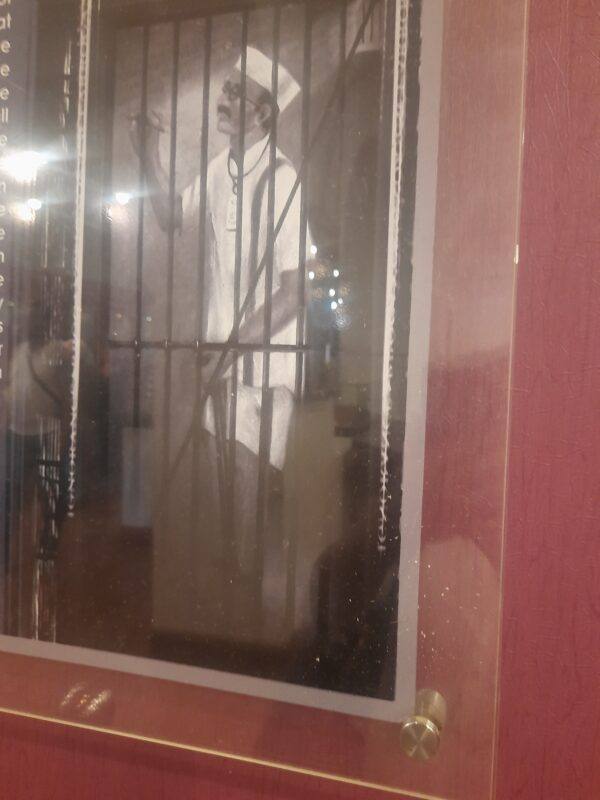
Savarkar, the doyen of the Indian revolutionaries and the potential danger for the British Empire, was convicted and brought to the cellular jail with a display badge around his neck about his sentence. Fifty years of punishment in Kalapani!
I am not going into the details of their crime and punishment. Anyone who ever raised a voice against British rule was jailed and tortured.
The life in the cellular jail was so dreadful and precarious that in every moment, some horrible experience awaited even the innocents. Gruesome torture and flogging were frequently resorted to on iron triangular frames, bar fetters, cross bars, neck rings, shackles, and leg iron chains. They were given a gunny-bag uniform. Unhygienic diets were other deterrents for those who refused to submit to the brutal wardens.
Surprisingly, the jailors and guards, who were Indians like Mirza Khan, also made the prisoners’ lives miserable. They were so cruel and carried out all punishments on their own brothers without mercy.
Food was served once every 24 to 30 hours. Rice porridge in rainwater with dust and wild grass was the food! The inhuman behaviour of British and Indian guards was beyond anybody’s imagination. They were tortured mentally and physically. The sacred threads of the Hindu convicts were removed, and Pandit Ram Rakha attained martyrdom fighting for them.
The prisoners were forced to engage in backbreaking tasks like oil extraction and other gruesome work, and guards would be there to flog when they were not able to pull on. Many of them committed suicide or died of torture.
At last, Nanda Gopal and a few others led the first hunger strike in 1933. The Chief Commissioner didn’t budge and said, “Let the dead bodies float in the ocean.” During the strike, three patriots died, and a few were forced to feed.
Rabindranath Tagore was emotionally upset and remarked in his Telegram.
”Your motherland will never forget her full-blown flowers.” The campaigns of Gandhiji and Rabindranath Tagore brought some changes to the lives of the inmates. A handwritten magazine, ‘CALL ‘, which had English and vernacular sections, was issued to them.
In 1937, they started the second hunger strike. Their political demands gave new impetus to the democratic movements in other jails. The political prisoners of Alipore Deoli, Berhampur, also started a hunger strike in support of their compatriots in Cellular jail.
The whole country awakened and supported the demand for the repeal of repressive laws and the repatriation of the exiled prisoners. The release of all political prisoners and the extension of civil liberty were the other demands.
They transformed the cellular jail into an active centre for the freedom struggle. They dared any kind of suffering and even death to put their foot forward for their demands.
Swaraj is our birth right. The echo in all cells.
Eventually, as a result of the assurances made by national leaders like Gandhiji, Rabindranath Tagore, and Subash Chandra Bose, the hunger strike was called off on August 28, 1937, and the repatriation started from September 22nd onwards.
At last, those who survived the treacherous and gruesome suffering were set free. The memoirs of the inmates, like Barindra Kumar Gosh’s ‘The Tale of My Exile’ and several other biographies and autobiographies, narrate the inhuman tales of those black days.
In 1924, Savarkar was released after writing several mercy petitions to the British. A biography named ‘Life of Barrister Savarkar’ authored by a certain Chitragupta was published.
The jail is a pilgrimage destination for freedom fighters. This colossal edifice has mutely witnessed the most treacherous of inhuman atrocities meted out by the freedom fighters.

The cells are open to the public, and the enclosure is where they were forced to engage in backbreaking work. The flogging stand, the gallows, the stone platform where the corpses are brought, and the isolated cells surprise you enough to make you wonder how someone could ever survive this inhuman torture. In total, there were 698 cells, and here, prisoners could be held in solitary confinement. Frequent executions took place in full view of the cells.
In the evening, there was a heart-touching film show about the history of Kalapani, right from the construction of the cellular jail to the sufferings and sacrifices of the inmates. The show runs through the independence struggle until we achieve freedom!
The movie is projected on the walls and cells of the jail and on a screen in the centre, which brings those horrific days to life!
We could feel their presence as all the prisoners were shown inside the cell. The script and the presentation were so realistic that all the spectators were awestruck and immersed in some of the sung and unsung brave hearts.
Suddenly, rain poured with thunder and lightning, but no one moved from where they were. Even nature was thundering. “Inkilab Sindabadh.!”
Tears rolled down along with the downpour. All spectators stood up and joined in when the national anthem of free India played, so it must have reached all the martyrs above!
Vande Matharam!
